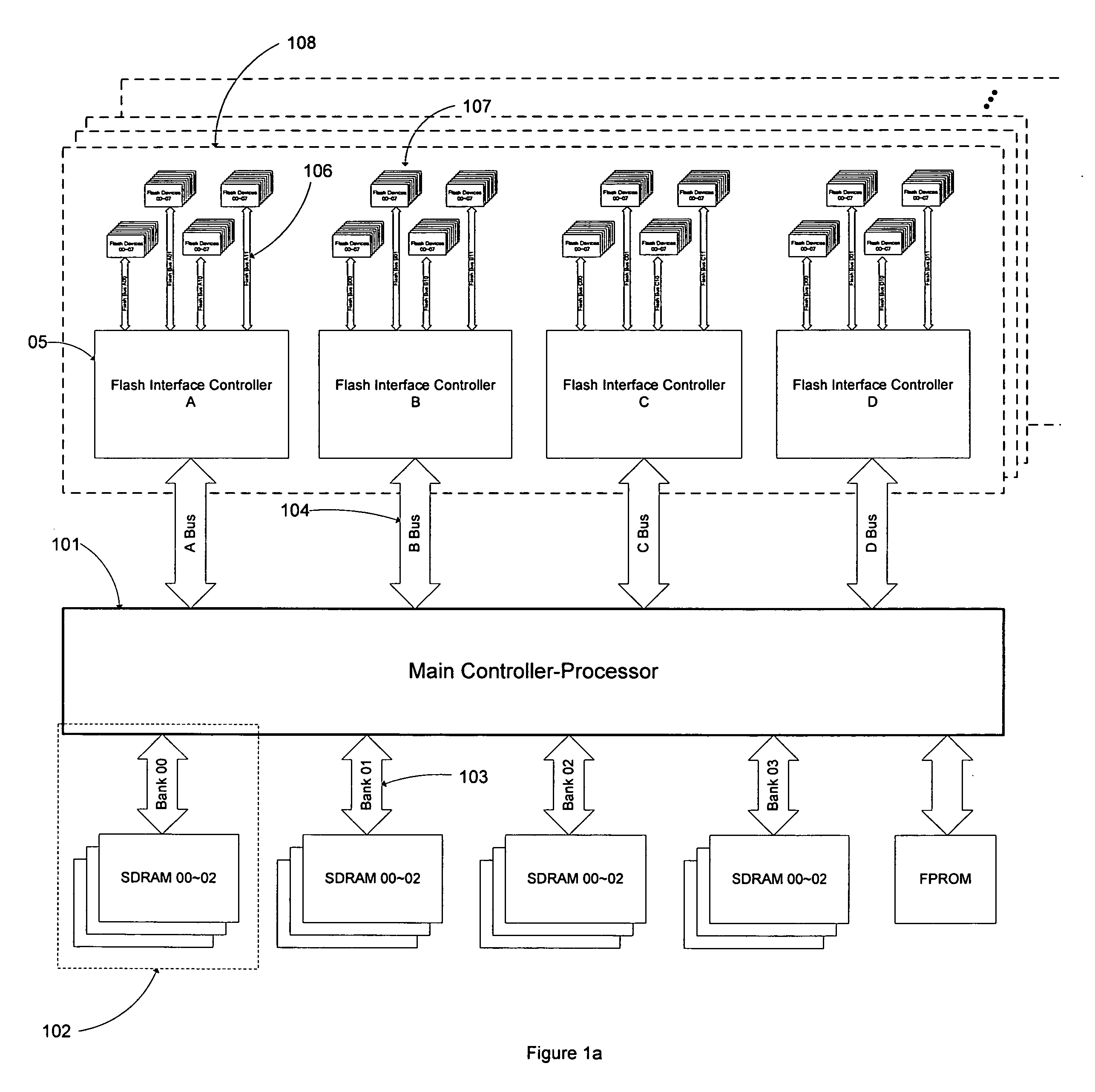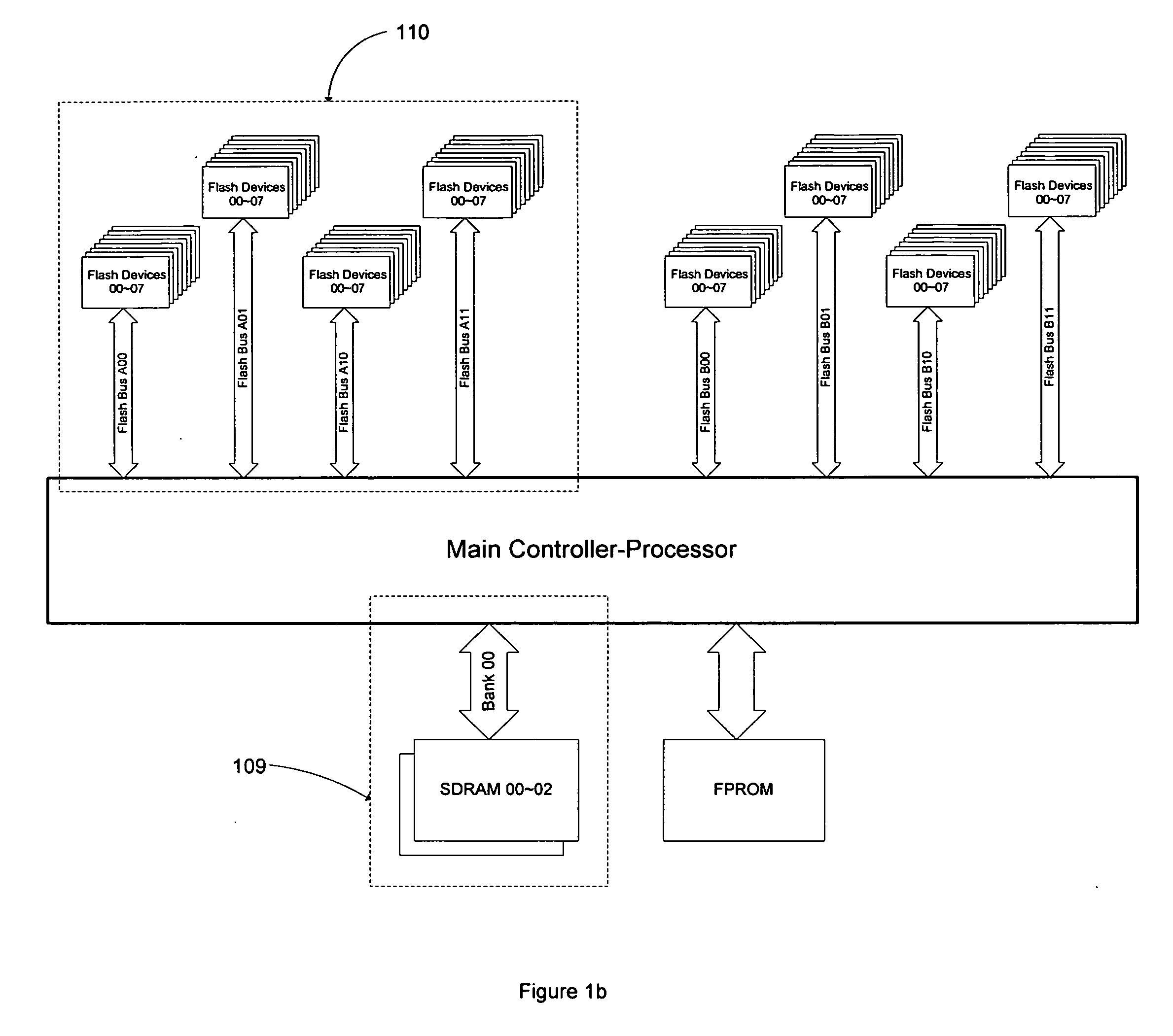Multiple chip module and package stacking method for storage devices
a storage device and chip module technology, applied in the field of computer systems, can solve the problem of limiting the miniaturization of the entire storage device, and achieve the effects of increasing capacity or adding functions, maximizing capacity, and highly reliable module to module relationships
- Summary
- Abstract
- Description
- Claims
- Application Information
AI Technical Summary
Benefits of technology
Problems solved by technology
Method used
Image
Examples
Embodiment Construction
[0034]FIG. 1a is a block diagram of a flash storage system according to a first example embodiment of the present invention. The block diagram shows the entire high-end system that is modularized, stacked, and packaged to achieve the desired features of the technique. The heart of the system is the main controller-processor 101 which interfaces with the flash memory, the flash PROM and the SDRAM memory blocks. The SDRAM is configured from a single bank 102 to a maximum of four banks depending on the desired capacity. Each bank such as 102 includes 3 SDRAMs. The flash devices such as 107 are controlled by the Flash Interface Controller such as 105. Each controller supports four flash buses such as flash bus A11106, and each flash bus supports a maximum of 8 flash devices. The main controller-processor supports four flash interface controllers through 4 different busses such as B bus 104. The four flash interface controllers with their corresponding flash devices comprise the memory s...
PUM
 Login to View More
Login to View More Abstract
Description
Claims
Application Information
 Login to View More
Login to View More - R&D
- Intellectual Property
- Life Sciences
- Materials
- Tech Scout
- Unparalleled Data Quality
- Higher Quality Content
- 60% Fewer Hallucinations
Browse by: Latest US Patents, China's latest patents, Technical Efficacy Thesaurus, Application Domain, Technology Topic, Popular Technical Reports.
© 2025 PatSnap. All rights reserved.Legal|Privacy policy|Modern Slavery Act Transparency Statement|Sitemap|About US| Contact US: help@patsnap.com



